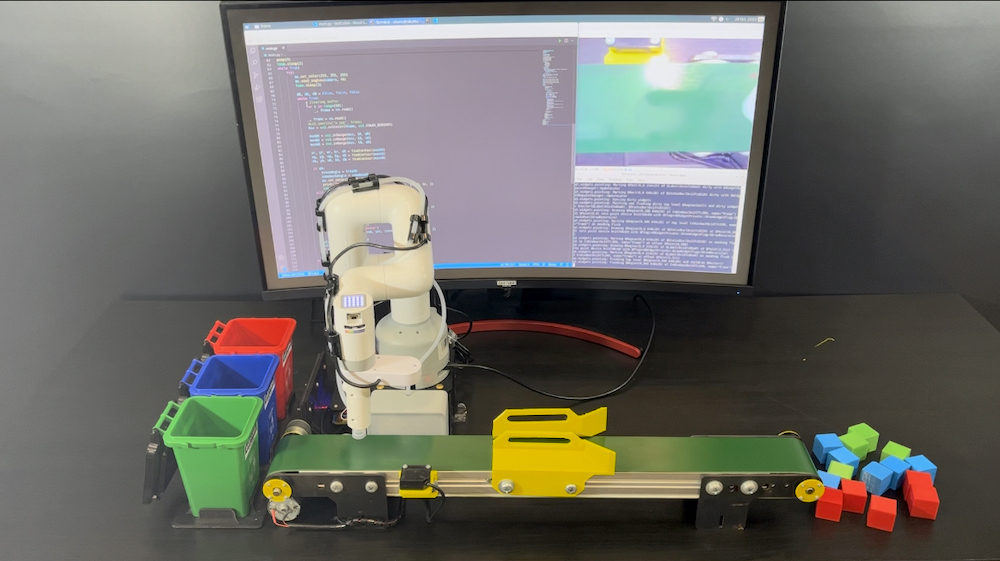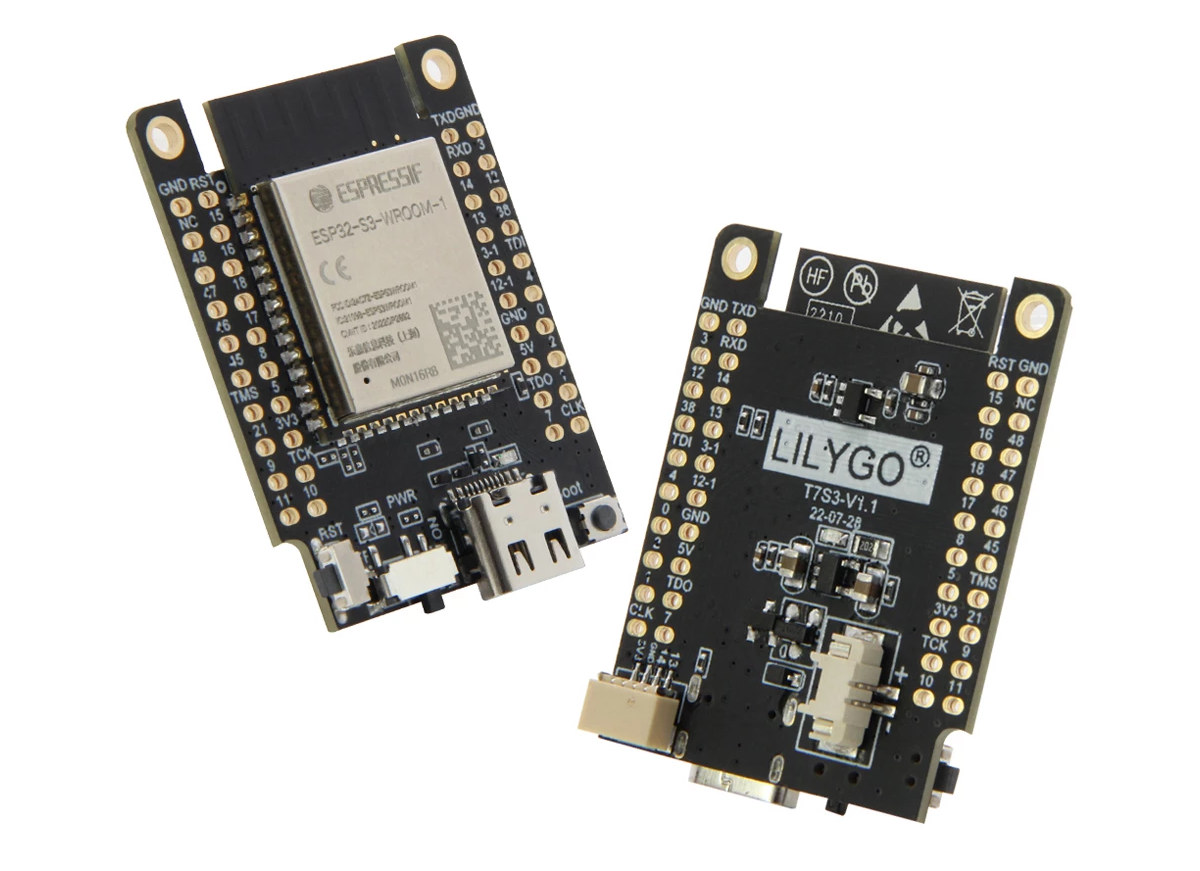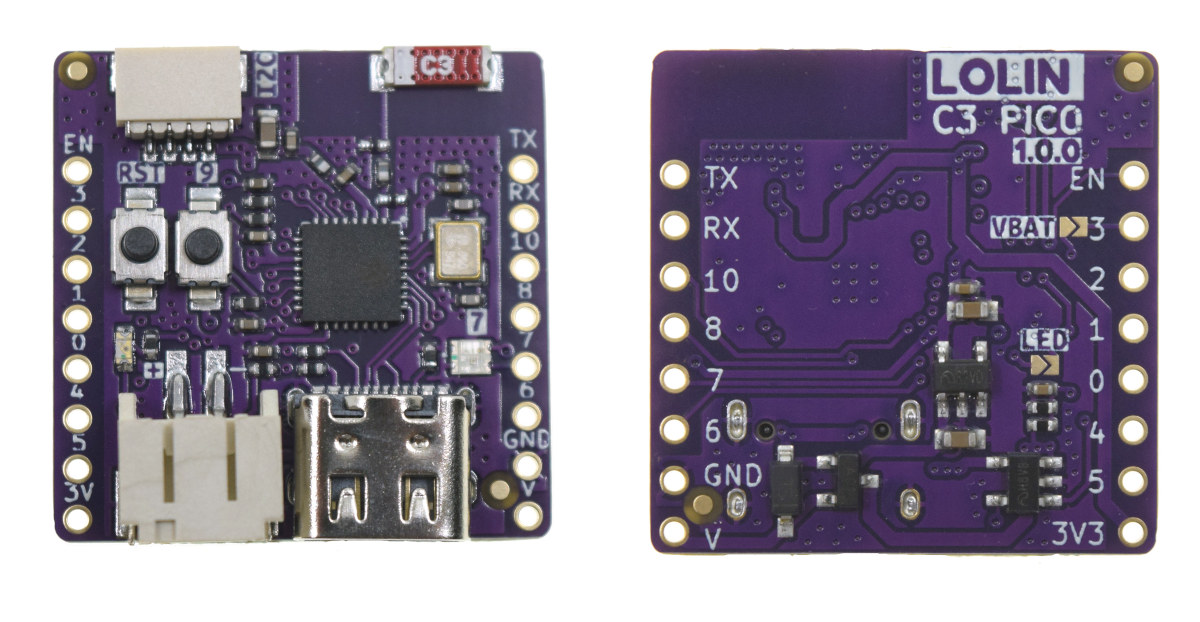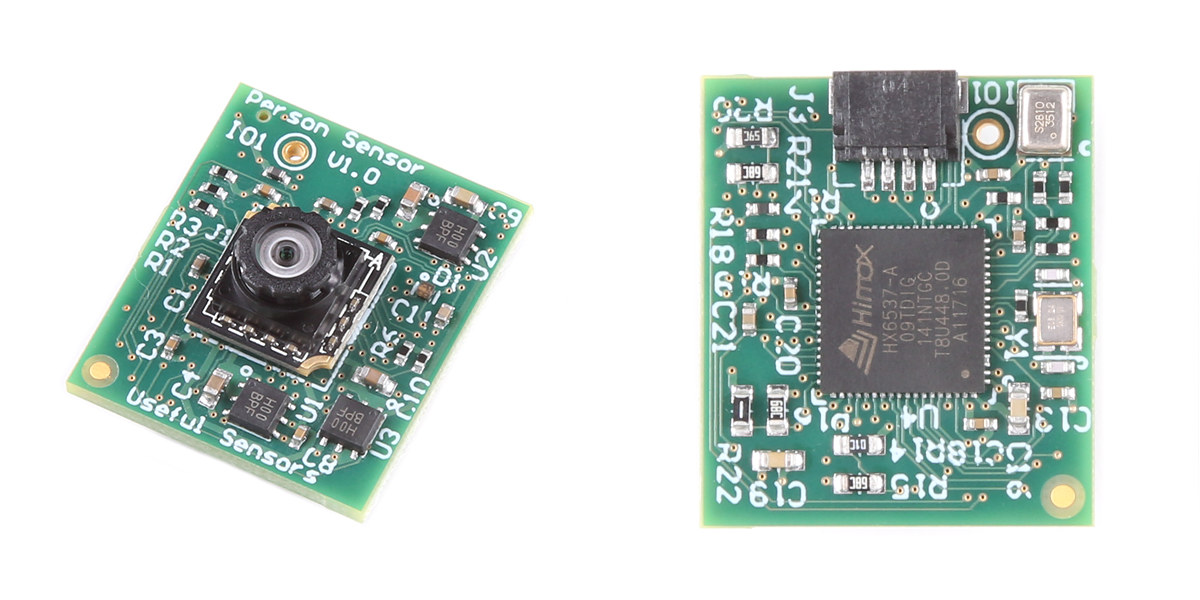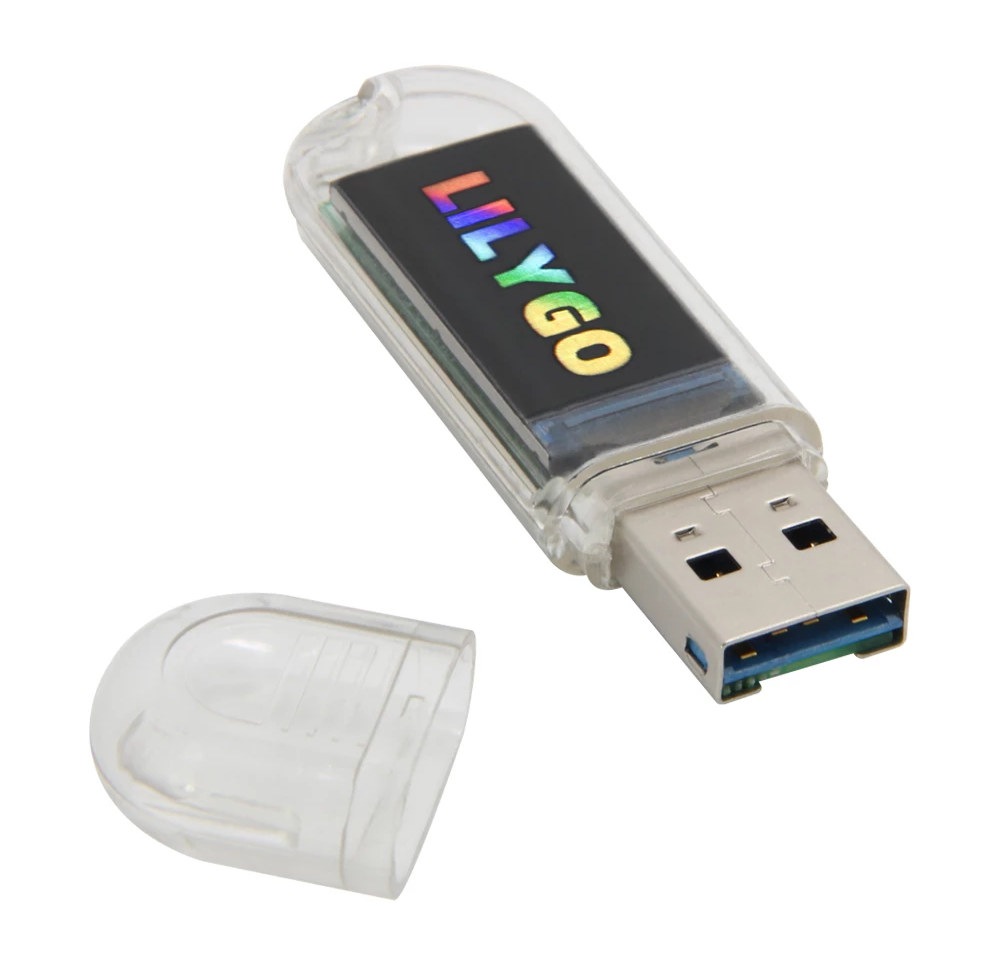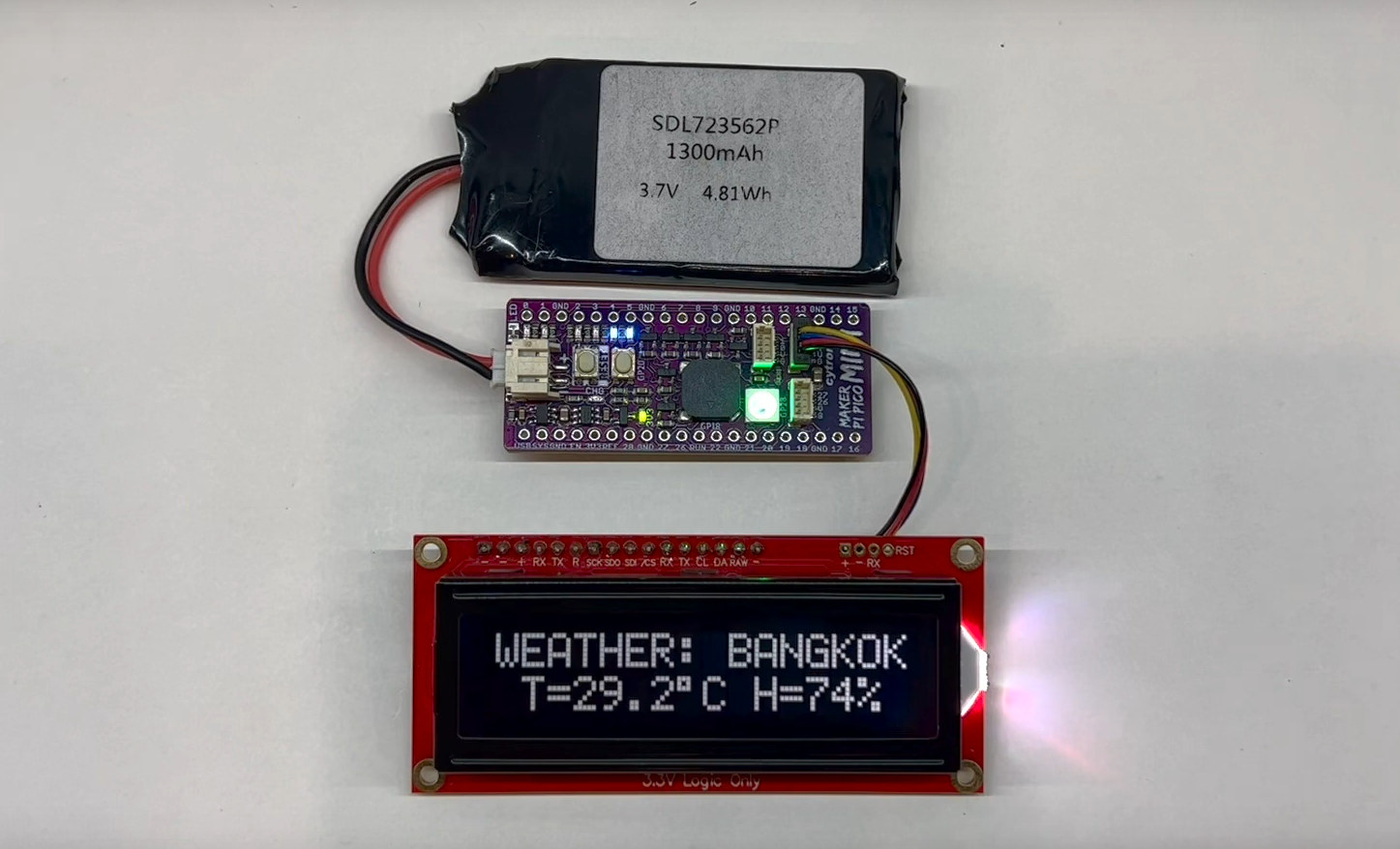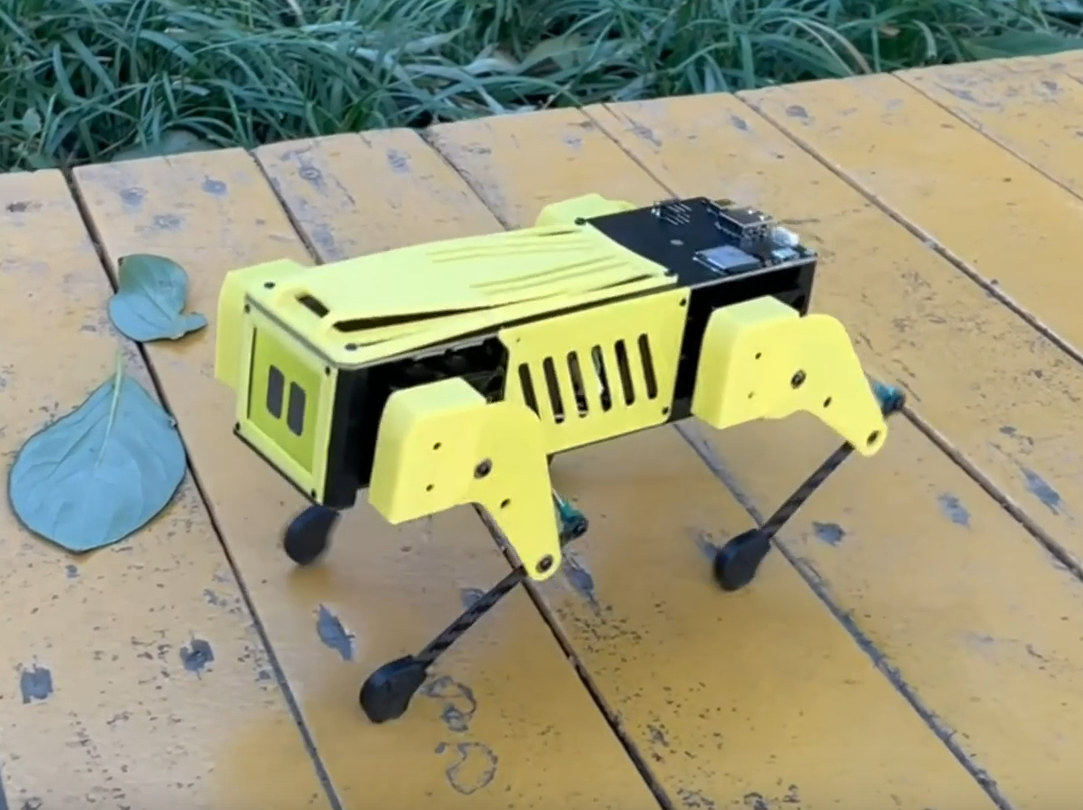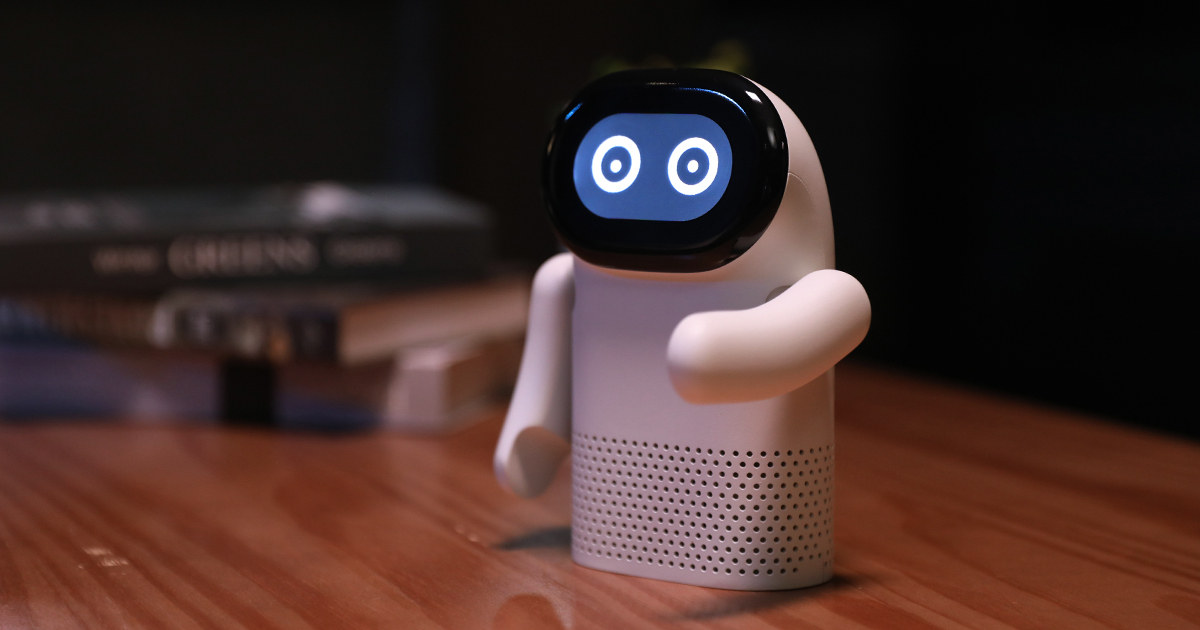myCobot 280 Pi is a versatile robotic arm with a 6 degree of freedom design. It was developed by Elephant Robotics using the Raspberry Pi 4 board as the main controller. The robot is compact and delivers stable operation making it ideal for confined spaces. It can also be programmed in a variety of languages, is easy to use, and offers a lot of features. It is suitable for those who are interested in learning how to program a robotic arm controller and for engineering projects. Unboxing myCobot 280 Pi The myCobot 280 Pi arm has a working range of 280 mm, weighs 850 grams, and can handle a payload of up to 250 grams. It is powered by 6 servo motors, one for each degree of freedom, and comes with a 5×5 matrix LED display, and supports LEGO parts as well. Controlled by a Raspberry Pi 4 single board […]
LILYGO T7-S3 ESP32-S3 board with 16MB flash, 8MB PSRAM, LiPo battery support sells for under $10 (Promo)
LILYGO has launched another ESP32-S3 development board. The T7-S3 is equipped with an ESP32-S3-WROOM-1 module with 16MB flash, 8MB PSRAM, and a PCB antenna. The board is fairly compact at 3.9×3.1 cm, can be powered through a USB-C port or a LiPo battery with charging support, and offers 40 through holes plus a Qwicc/QT I2C connector for expansion. LILYGO T7-S3 specifications: Wireless module – ESP32-S3-WROOM-1-N16R8 module with SoC – Espressif Systems ESP32-S3 dual-core Xtensa LX7 processor @ up to 240 MHz integrating vector instructions for AI acceleration, 512 KB SRAM, WiFi 4 and Bluetooth 5.0 LE & Mesh connectivity Memory – 8MB PSRAM Storage – 16MB SPI Flash USB – USB Type-C port Expansion 2x 20-pin headers with up to 29x GPIOs, 20x ADC, UART, SPI, Touch interface, 5V, 3.3V, and GND 4-pin Qwiic/QT I2C connector Misc – User LED, charging LED (blue), reset and boot buttons, power on/off switch […]
LOLIN C3 Pico is a tiny ESP32-C3 board with battery charging support
LOLIN C3 Pico is a tiny (25.4×25.4mm) ESP32-C3 RISC-V board with 2.4 GHz WiFi and Bluetooth Low Energy connectivity, a few I/Os, and LiPo battery support including charging circuitry. I tend to like Wemos/LOLIN boards, because of their small form factor, support for equally tiny shields, and low price. The LOLIN C3 Pico is no exception, and even adds a few features such as an RGB LED, an I2C connector, and support for battery power and charging. LOLIN C3 Pico specifications: SoC – Espressif Systems ESP32-C3FH4 single-core 32-bit RISC-V (RV32IMC) microcontroller up to 160 MHz with 400 KB SRAM, 4MB Flash Connectivity – 2.4 GHz WiFi 4 and Bluetooth 5.0 LE (in SoC) Expansion headers 2x 8-pin headers with up to 12x GPIO, ADC, I2C, SPI, UART (3.3V I/O voltage) LOLIN I2C port USB – 1x Type-C USB for 5V power and programming Misc – Reset button and user button, […]
Easily add face detection to your project with the Person Sensor module
It’s now much easier to AI features to your project thanks to better tools, but as we’ve experienced when trying out Edge Impulse machine learning platform on the XIAO BLE Sense board, it still requires some effort and the learning curve may be higher than some expect. But for common tasks like face detection, there’s no reason for the solution to be hard-to-use or expensive, and Pete Warden (Useful Sensors) has designed the $10 Person Sensor fitted with a camera module pre-programmed with algorithms that detect nearby faces and reports the results over an I2C interface. Person Sensor specifications: ASIC – Himax HX6537-A ultra-low-power AI accelerator @ 400 MHz with 2MB SRAM, 2MB flash Camera Image Sensor – 110 degrees FOV Image scan rate – 7Hz with no facial recognition Image scan rate – 5Hz with facial recognition active Host interface Qwiic connector for the I2C interface up to […]
T-Dongle-S3 USB dongle combines ESP32-S3 wireless MCU with optional color display
LilyGO T-Dongle-S3 is a USB dongle based on ESP32-S3 dual-core microcontroller with WiFi 4 and Bluetooth 5.0 connectivity, a microSD card slot, as well as an optional 0.96-inch color display. You may remember the company launched the T-Dongle ESP32-S2 last spring, and I first thought it was an update to ESP32-S3, but the new T-Dongle-S3 has quite more compact design and a smaller set of features that makes it suitable for data logging and displaying basic information over a wireless connection. T-Dongle ESP32-S2 development board specifications: Wireless SoC – Espressif Systems ESP32-S3 with Dual-core 32-bit Xtensa LX7 microcontroller up to 240MHz RISC-V ULP Co-processor 512KB SRAM 2.4GHz Wifi 4 (802.11b/g/n) Bluetooth 5.0 BLE + Mesh Storage 4 MB flash (or 16MB flash depending on where you look) MicroSD card socket cleverly “hidden” under the USB connector Display – Optional 0.96-inch 65K color IPS LCD (ST7735 SPI controller) with 160 x […]
Making a weather station with Maker Pi Pico Mini board and SparkFun SerLCD display
Cytron’s Maker Pi Pico Mini comes with a Raspberry Pi Pico or Raspberry Pi Pico W microcontroller board. It has the same features as the larger Maker Pi Pico including a GPIO LED, WS2812B Neopixel RGB LED, a passive piezo buzzer, programmable push buttons, and a reset button. I would like to thank Cytron for sending the Maker Pi Pico Mini board fitted with a Raspberry Pi Pico W as well as a character RGB LCD and a 3.7V Lithium Polymer battery. In this tutorial, we will show how to make an Internet connected weather station with the Maker Pi Pico Mini board using Arduino code and the OpenWeather API. We’ve already covered the Maker Pi Pico Mini board, so we’ll have a closer look at the accessories SparkFun SerLCD character display The SparkFun SerLCD is a 16×2 character display with a Microchip ATmega328P microcontroller that handles commands sent from […]
Mini Pupper 2 – Raspberry Pi 4 / CM4 robot dog adds ESP32, ROS2 support, servo feedback (Crowdfunding)
Mini Pupper 2 is an improved version of the Mini Pupper robot dog powered by a Raspberry Pi 4 introduced last year. The new model support either the Raspberry Pi 4 SBC or CM4 module, adds an Arduino programmable ESP32 wireless MCU, support for ROS2, and servo feedback. Two variants are offered with the Mini Pupper 2 implementing position servo feedback, and the Mini Pupper 2 Pro position, velocity, and torque servo feedback. Other changes common to both variants include the addition of an IMU, microphone & speaker, a touch sensor, support for autocalibration, as well as a new mobile app for control. Mini Pupper 2 specifications: CPU module – Raspberry Pi 4 SBC or Raspberry Pi CM4 system on module MCU – ESP32 WiFi and Bluetooth dual-core microcontroller programmable with the Arduino IDE Display – 320×240 LCD for facial animation Audio – Built-in Microphone and speaker Camera – Support […]
roboBeats – Interactive music robot doubles as Bluetooth speaker (Sponsored)
Elephant Robotics just launched roboBeats interactive music robot & Bluetooth speaker on Kickstarter. The robot is comprised of a display, two arms, as well as touch sensors, and a speaker for user interaction. The company is known for its robots for education such as the myBuddy 280 or MechArm Pi 270 robotic arms based on Raspberry Pi 4 SBC, and while the roboBeats is more like a toy for children and adults alike, the ESP32 wireless microcontroller powering the desktop robot can also be programmed with the Arduino IDE. roboBeats key features and specifications: Wireless MCU – Dual Xtensa 32-bit microcontroller (ESP32) with WiFi and Bluetooth Display – 320×240 display Audio – Full frequency speaker Two arms Touch interfaces on the front body (chest) and top (head) Motors – Brushless (BLDC) motors with near-silent operation USB – 1x USB Type-C port located under the robot for power and programming Misc […]


